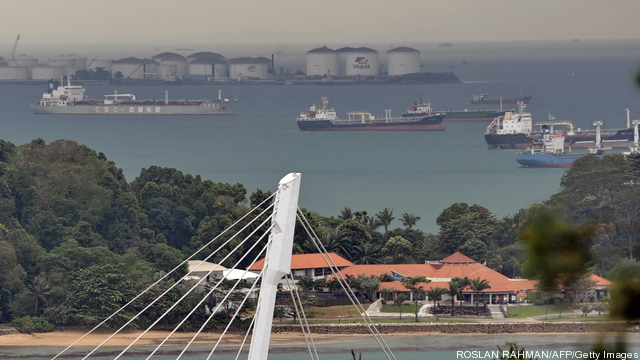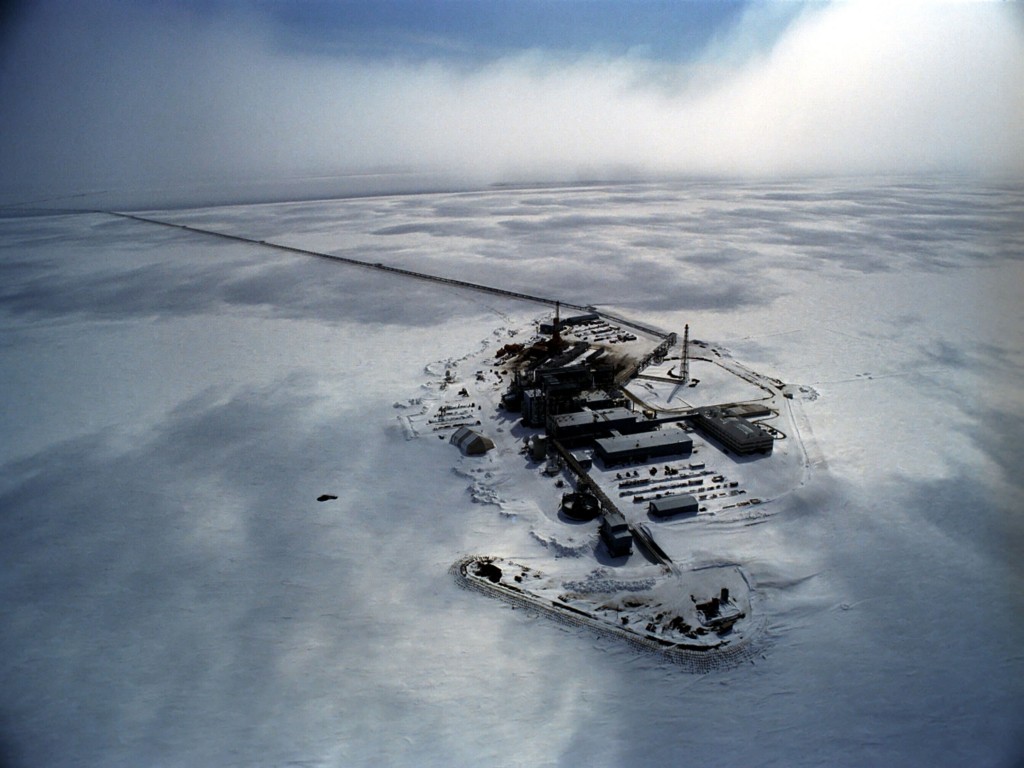The future of Alaska’s abundant natural gas reserves has hung in the balance for decades, with much disagreement over how to maximize value for the disparate stakeholders and minimize negative environmental impacts associated with developing the gas. However, the US energy picture has been radically redrawn in recent years, finally putting a potential solution within… Keep reading →
ConocoPhillips
Sign up and get Breaking Energy news in your inbox.
We will never sell or share your information without your consent. See our privacy policy.By Javier E David In a country where oil wealth has typically been controlled up by oil companies, the concept of the U.S. harnessing its energy boom to shore up its frayed public finances may be hard to conceive. Although state control of natural resources tends to evoke images of authoritarian countries like Venezuela or… Keep reading →

Moody’s analysts are have weighed in on prospects for liquefied natural gas (LNG) exports from the US, forecasting that chemical companies and utilities could see some negative impact from higher domestic natural gas prices, but not enough to bring down their credit ratings.
Moody’s expects US LNG export capacity to rise to 6.3 billion cubic feet per day by 2020 – equivalent to 178.4 million cubic meters per day, compared with global exports totaling 330.8 billion cubic meters per day in 2011, according to BP’s Statistical Review of World Energy. “We do not expect the volume of exports from North America will have a significant impact on the global LNG trade during this decade,” the rating agency said in a report, The Prospect of US LNG Exports Influences Pricing and Gas Markets Worldwide. Keep reading →

Tax reform in Alaska promises to attract more oil and gas investment, but even for an established player in the state such as ConocoPhillips, getting substantial new production onstream.
Alaska’s state legislature approved oil tax legislation reform earlier this month designed to establish a more attractive investment climate for oil and gas producers. Companies such as ConocoPhillips, ExxonMobil and BP have been calling for changes to Alaska’s fiscal system for years, arguing that it deters investment in the state’s substantial resources. Keep reading →

US natural gas prices have begun to strengthen as oil prices have begun to drop, but both remain far from levels that would prompt exploration and production companies to shift capital back to gas from liquids.
For the past few years, with Henry Hub natural gas trading mostly in the $2.00-$4.00 per million Btu range, higher-priced and higher-margin oil and liquids have been the target of choice for US onshore drillers. But as natural gas prices have recently edged above $4.00/MMBtu and West Texas Intermediate oil prices have dipped below $90 per barrel, some analysts are questioning at what price levels gas drilling might look appealing, and oil or liquids drilling less so. Keep reading →
Oil Sands Developers: Market Access Issues Weigh Even As Tech Promises Emissions Reductions
By Jared Anderson
It’s telling that a panel discussion about using technology to reduce the environmental impacts associated with Canadian oil sands development ended up mainly being about dire market access issues impacting producers.
At the FT Global Investment Series: Focus on Canada conference held in New York City this week, corporate executives were clearly concerned about reducing greenhouse gas emissions from oil sands projects, but they were also very concerned about the billions of dollars being lost from commodity price differentials between Canadian heavy oil and other grades. Keep reading →

Your favorite Exxon station is very likely not owned or operated by Exxon and the same is true for the rest of the major oil companies. The Chevron’s and BP’s of the world largely distanced themselves from the branded retail gasoline business following the mega-mergers of the late 1990’s and early 2000’s due to financial and regulatory factors.
In fact, these businesses – that most people still refer to as gas stations – are now thought of by the industry as convenience stores that sell motor fuels. The downstream segment – refining and marketing – of the oil and gas business has been marginally profitable for decades. But the vertically integrated model first championed by John D. Rockefeller’s Standard Oil remains attractive to the majors because owning refineries provides a guaranteed market for their often highly-profitable upstream businesses of finding and developing oil and gas. The upstream was often thought of as subsidizing the downstream, as Steve Coll described it in his book about ExxonMobil, “Private Empire.” Keep reading →

It appears increasingly likely that Venezuelan President Hugo Chavez will not return to power following his latest cancer treatment in December and analysts are considering the implications of a post-Chavez regime for one of the largest crude oil producers in the world.
Venezuela holds some of the world’s largest oil reserves and is the second largest Opec oil exporter to the US. Oil revenue accounts for a bulk of the government’s income and has largely been used to fund Chavez’s wide-ranging social programs. But the country’s oil industry – which is essentially state-owned company PDVSA – has been struggling with declining production rates at mature fields, along with other problems. Keep reading →

The nation is flooded with natural gas. For the last twelve months, the amount of gas available to the market exceeds five-year averages. With more gas than anyone can use, producers are now looking for new consumers. Two new opportunities have emerged and one could disrupt the nation’s economy in some very positive ways.
Less than five years ago it looked like North America’s natural gas market was going to become highly dependent on foreign imports. Anticipating a growing need to offset declining natural resources, investors built eleven liquefied natural gas (LNG) import terminals along the east coast and the Gulf of Mexico. Seven more were approved by federal regulators. But during the last 12 months, very little LNG was imported. Keep reading →



